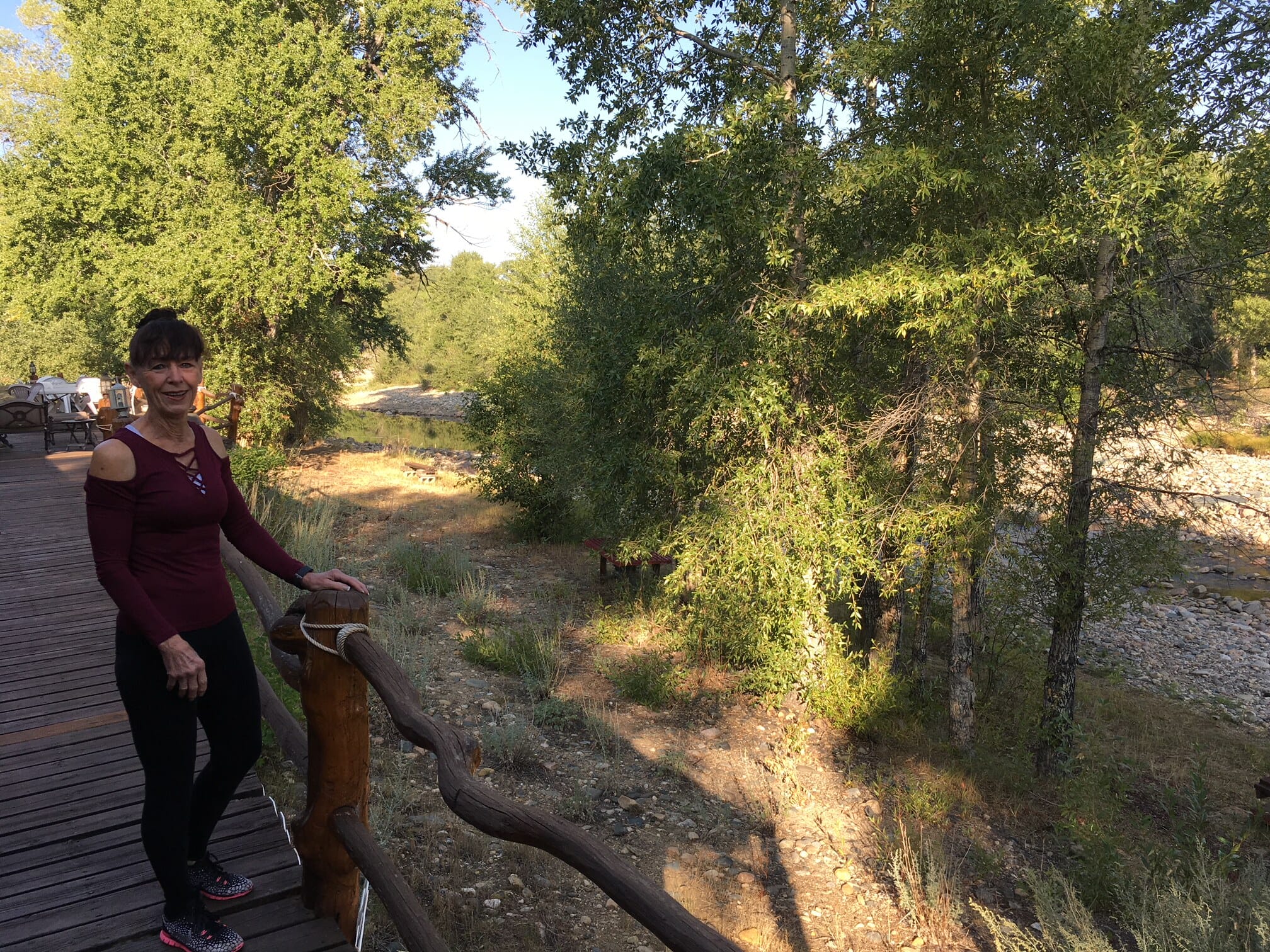Caption: Lynn Finley alongside the Encampment
By Chris Wood
I met Lynn Finley last week when Beth and Bruce White hosted a fundraiser for Trout Unlimited’s North Platte restoration work. Lynn is a small, fire-cracker of a woman who runs a lodge in Riverside, Wyo. We were sitting in her kitchen overlooking the Encampment River, and she said, “It is like I hit the lottery. It’s amazing. The fish go by and they smile and wave at me as they head upstream to spawn.”
Such is the happy outcome of an 18-year ordeal for Lynn and her husband, R.G.
Eighteen years ago, they noticed that the annual construction of a stream-gravel push-up dam by upstream irrigators was causing the river to eat into their stream-bank and threaten their lodge. The dam re-routed the Encampment into an irrigation ditch.
Lynn contacted various state and local agencies with photographs of the damage, but no one could help. Then, she met Glen Levengood of the Saratoga, Rawlins, Encampment Conservation District. After so many fits-and-starts, Lynn had essentially given up, but Glen would not.
“He was as tenacious as a bulldog,” said Lynn. Even after he contracted cancer, he kept pushing to convince five or six ranchers that used the irrigation ditch to sign a contract allowing the work to fix the problem.
One day, as Lynn was in her kitchen, she heard the rumble of trucks coming down her dirt road. They carried huge boulders and dumped them in the pasture next to the river. “It looked like I was growing boulders, and I cannot tell you happy that made me.” Contractors used the boulders to create rock vanes to divert the flow of the river away from the bank, saving the lodge.
That spring Levengood’s daughter, a local fishing guide, told Lynn that she and her fiancé wanted to marry at the lodge. On the day of the wedding, her six bridesmaids floated, one by one, down the Encampment to the lodge, and the bride came down last. Lynn broke down in front of me when she described seeing the tears in Livengood’s eyes as his daughter stepped out of the raft. Glen Levengood passed away that fall.
Several years later, Jeff Streeter of Trout Unlimited, completed the work, building more rock vanes and plunge pools near the lodge. Fish now spawn in areas they could not previously live. Jeff’s work near Lynn’s lodge is a small part of the several linear miles of streambank restoration he and our partners have completed on the North Platte system—of which the Encampment is an important tributary.
In addition to habitat restoration, Jeff has reconnected more than 90 miles of the North Platte system over the past seven years. Next year, he will remove a dam near the confluence of the Encampment and the North Platte. That will open up 70 miles of the Encampment for North Platte fish. This is important as the Encampment is cooler than the North Platte, and can provide a thermal refuge for trout in the summer months.
Make no mistake about it, the North Platte is a fish factory; producing 4,000 to 5,000 fish per mile in some stretches. And like most rivers in the U.S., it has been worked hard. For example, at the turn of the century, millions of railroad ties for the Northern Pacific Railroad were cut from the nearby Medicine Bow National Forest, and then floated down the North Platte in the spring thaw. This caused the river to widen and straighten. Mining, agriculture and other development have also taken a toll on the river.
The restoration work that Trout Unlimited is doing with private landowners such as Beth and Bruce White, small business owners such as Lynn and R.G., and other state and federal partners is helping to recover the natural resiliency of the North Platte and will make it better able to withstand the likelihood of more intense wildfires, prolonged drought and severe floods.
Thanks to their commitments, the North Platte should remain a fish-factory.
Chris Wood is the president and CEO of Trout Unlimited. He lives in Washington, D.C., and works from TU’s Arlington, Va., headquarters.



